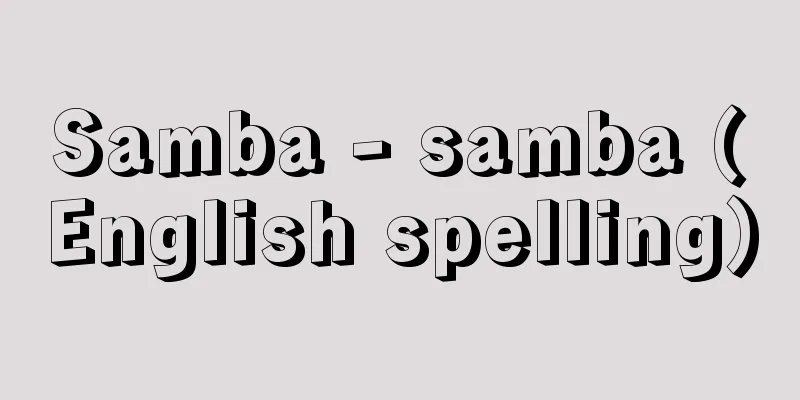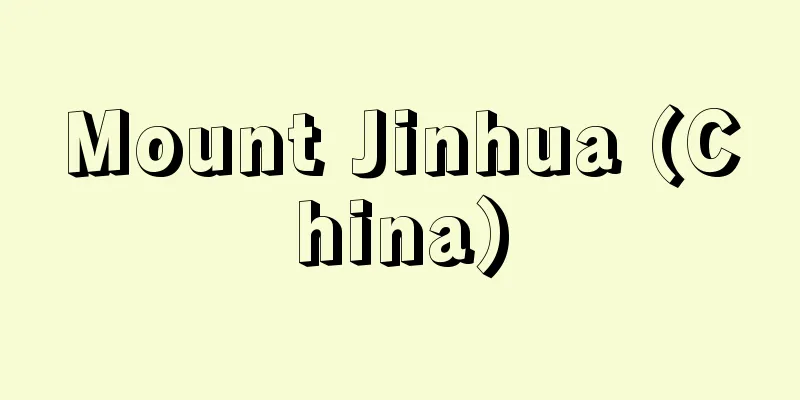Ashikaga Tadayoshi - Ashikaga Tadayoshi

|
A military commander during the Northern and Southern Courts period. Takauji's younger brother. He was known as Sanjo-dono and Nishiki-no-koji-dono. He worked with Takauji during the Genko Incident, and after the establishment of the Kenmu government, he was appointed Left Horse Captain and Sagami no Kami. In 1333 (Genko 3, Shokei 2), he was in charge of 10 provinces in the Kanto region as a steward for Prince Narinaga. In 1335 (Kenmu 2) during the Nakasendai Rebellion, he killed Prince Morinaga and fled to Mikawa, but joined Takauji who had traveled east, defeated the army of Hojo Tokiyuki, and restored Kamakura. He then traveled west to Kyoto, but was defeated and fled to Kyushu. In 1336 (Engen 1, Kenmu 3), he traveled east and established the shogunate with Takauji. At the time of the founding of the shogunate, it was a duopoly with Takauji in charge of military affairs and Tadayoshi in charge of governance, but soon Takauji's authority was transferred to Tadayoshi, who then came to the forefront and conducted politics. Naoyoshi idealized regent government, adopted civil government, and implemented policies to protect the old conservative powers, such as improving the shogunate's institutions, establishing law and order, and promoting Buddhism. This caused opposition from new powers such as former non-vassals and manor officials in the Kinai and nearby provinces, and led to conflict with their representative, the steward Takano Moronao. Thereafter, the Naoyoshi and Moronao factions fought over policy decisions and the appointment and dismissal of central government positions and provincial constables, leading to Naoyoshi's use of force in 1349 (Shohei 4, Sadawa 5), which eventually escalated into the Kanno Disturbance, the largest civil war in the early Muromachi shogunate period. After killing Moronao at Mukogawa in Settsu, Tadayoshi reconciled with Takauji, but in July 1351 (Shohei 6, Kan'o 2), Tadayoshi left Kyoto and travelled through Hokuriku to enter Kamakura, aiming to regain his power. However, he was defeated at Hayakawajiri in Sagami by Takauji, who had come east, and surrendered to Takauji. He died in Kamakura on February 26, 1352. It is said that Tadayoshi poisoned him to death. [Hiroshi Koyou] "Shinichi Sato, History of Japan 9" (1965, Chuokoron-Shinsha)" ▽ "Mitsuhisa Takayanagi, Revised Edition of Takauji Ashikaga" (1966, Shunjusha) [Reference] | |Source: Shogakukan Encyclopedia Nipponica About Encyclopedia Nipponica Information | Legend |
|
南北朝時代の武将。尊氏(たかうじ)の同母弟。三条殿、錦(にしき)小路殿と称せられた。元弘(げんこう)の変には尊氏とともに活動し、建武政府成立後左馬頭(さまのかみ)、相模守(さがみのかみ)に任じられ、1333年(元弘3・正慶2)成良親王の執事として関東10か国を管轄(かんかつ)した。1335年(建武2)の中先代(なかせんだい)の乱では護良親王を殺害し三河まで逃れたが、東下してきた尊氏と合流し北条時行(ときゆき)軍を破り鎌倉を回復、ついで西上入京したが敗退し九州に逃れた。1336年(延元1・建武3)東上し、尊氏とともに幕府を開いた。幕府創立当時尊氏は軍事面、直義は統治面を担当する二頭政治であったが、まもなく尊氏の権限は直義に委譲され、以後直義が表面にたち政治を行った。 直義は執権政治を理想として文治政治をとり、幕府機構の整備、法秩序の確立、仏教の興隆など、保守的な旧勢力保護の政策をとった。そのため、畿内(きない)近国の旧非御家人(ごけにん)や庄官(しょうかん)などの新興勢力の反発を買い、その代表ともいえる執事高師直(こうのもろなお)と対立した。以後直義派と師直派とは、政策の決定、中央官職や各国守護職などの任免をめぐって争い、1349年(正平4・貞和5)直義による実力行使となり、ついには観応(かんのう)の擾乱(じょうらん)とよばれる室町幕府初期最大の内乱にまで発展した。師直を摂津武庫川(むこがわ)で殺した直義は尊氏と和解するが、1351年(正平6・観応2)7月直義は出京し北陸を経て鎌倉に入り、勢力の回復を目ざした。しかし東下してきた尊氏のため相模早河尻(はやかわじり)で敗れ、尊氏に降伏した。翌1352年2月26日鎌倉で没した。尊氏による毒殺といわれている。 [小要 博] 『佐藤進一著『日本の歴史 9』(1965・中央公論社)』▽『高柳光寿著『改稿 足利尊氏』(1966・春秋社)』 [参照項目] | |出典 小学館 日本大百科全書(ニッポニカ)日本大百科全書(ニッポニカ)について 情報 | 凡例 |
Recommend
Kishobori - Kishobori
...The custom of tattooing is said to have begun ...
Reinforced Plastics - Kyoka Plastics
A plastic product molded with glass fiber, or occa...
Petergof
...Petrodvorets (population 82,200) is the main s...
Marine relict species
...This refers to the situation where an animal t...
pallamaglio
…However, the birthplace of hockey is believed to...
Bufonidae
… The suborder Anura includes well-known species ...
Bassano - Bassano (English spelling)
A family of Italian painters, nicknamed after the...
cantiga
...As Christianity took root north of the Alps, h...
Australian oyster
...oviparous. (5) Australian oyster Saccostrea co...
Medical fees - Shinryohoushu
Remuneration for medical services provided by a c...
Enclosed Garden - Enclosed Garden
...The basic structure of a Western garden, in wh...
Krkonose (English spelling)
…A mountainous region that stretches across the n...
Foreign handprint - Ichitegata
...It is generally believed that multiple entries...
helipad
…The term heliport was coined when helicopters ca...
Money and Trade Considered
…Born in Edinburgh, Scotland, to a family of prec...









